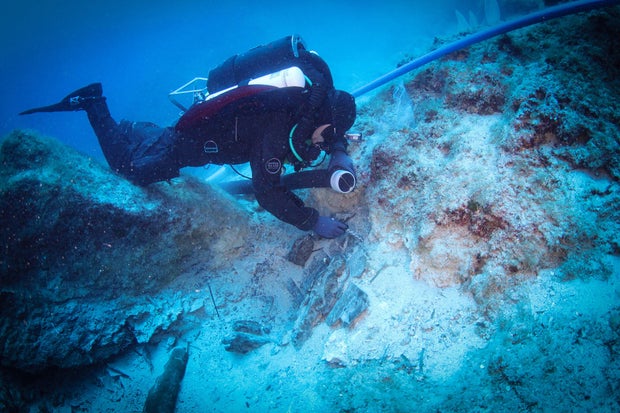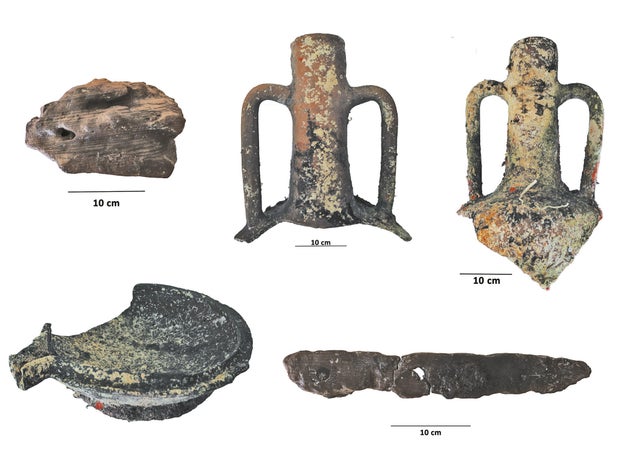James Delgado on uncovering shipwrecks

Divers exploring the centuries-old Antikythera wreck retrieved intact pieces of the ship and found artifacts that shed light on life aboard the craft.
The Antikythera shipwreck dates back to the first century, according to the Woods Hole Oceanographic Institution. The wreck site is near Crete. The ship was a trading or cargo vessel. First discovered in the spring of 1900, it has been the subject of multiple investigations since then. Previously, divers found life-size marble statues of horses, jewelry and hundreds of works of art and other artifacts. Human remains were also found aboard the ship in the 1970s.
The most recent expedition was led by the Swiss School of Archaeology in Greece and took place between May and June 2025, according to a news release.
 A diver explores the Antikythera in 2025.
Swiss School of Archaeology in Greece
A diver explores the Antikythera in 2025.
Swiss School of Archaeology in Greece
One of the main goals of the expedition was to retrieve three outer planks joined to the ship's internal frame. This "rare set" of hull fragments was found in 2024, but could not be removed from the wreck until this dive, the school said. The recovery of the planks and frame confirm the construction method used to create the ship, and offers "valuable insight into ancient naval techniques," the school said.
The wood itself appears to be elm and oak and may date back as far as 235 BCE, the school said. The construction method used, where the outer hull is built before the internal parts of the ship, dates to between the fourth and first century BCE. It's not clear if the pieces are from the ship's upper segment, a smaller vessel or a repair that may have been done. Researchers are studying the pieces to learn more about them, the school said.
The divers also found small fragments of a nude male statue. The statue's marble base and part of the left leg was clearly identified. Other fragments are trapped within the wreck site and cannot currently be extracted, the school said. A terracotta mortar used for crushing and mixing food was also found in the wreck.
 Fragments found in the wreckage of the Antikythera.
Swiss School of Archaeology in Greece
Fragments found in the wreckage of the Antikythera.
Swiss School of Archaeology in Greece
Meanwhile, a number of Chian amphorae, a type of Ancient Greek jar used for storage and transport, were found "spread across two distinct zones of the wreck," the school said.
The divers exploring the wreck had to take extra steps to ensure they could safely search the area, the school said. The wreck is about 140 to 170 feet below the surface, which is too deep for standard scuba diving but too shallow for remotely-operated vehicles, according to the Woods Hole Oceanographic Institution. The Swiss School of Archaeology divers used closed-circuit rebreathers with gas mixes to ensure they could safely explore the wreck. Underwater drones also monitored the dive in real-time.
Kerry Breen is a news editor at CBSNews.com. A graduate of New York University's Arthur L. Carter School of Journalism, she previously worked at NBC News' TODAY Digital. She covers current events, breaking news and issues including substance use.


















































